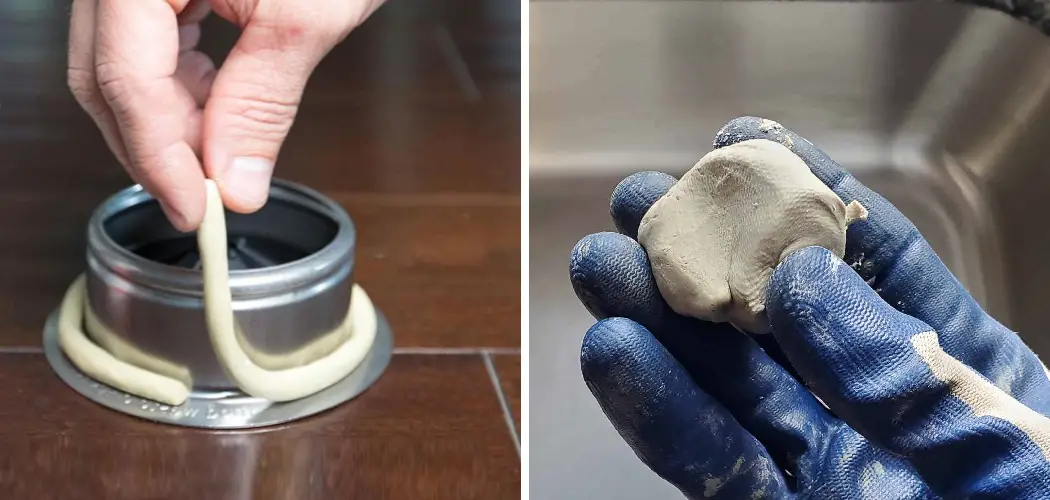Plumbers putty is a commonly used sealant in plumbing projects. It is a pliable substance that acts as a waterproof barrier between two surfaces, making sure water does not leak through. However, like any other product, plumbers putty can go bad over time. It is essential to know when your plumbers putty has gone bad because if it fails to do its job, it can lead to costly damages and repairs.
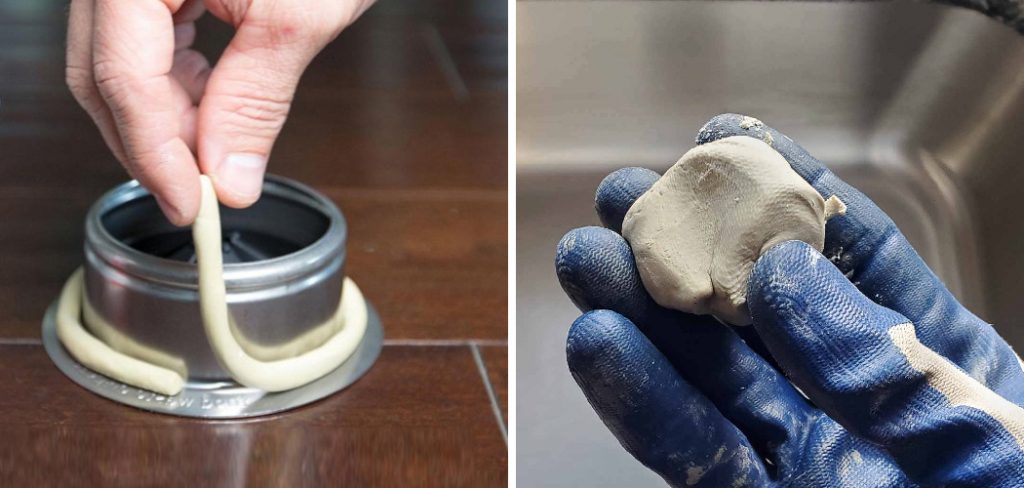
The main advantage of knowing if your plumbers putty is bad is to prevent any potential water leaks. Water leaks can lead to mold growth, structural damage, and even health risks. By identifying bad plumbers putty, you can take immediate action and replace it before any serious problems occur. You can find step-by-step instructions on how to tell if plumbers putty is bad in this blog article.
Step by Step Processes for how to tell if plumbers putty is bad
Step 1: Inspect the Color of the Putty
Fresh plumbers putty should be a uniform and consistent color, typically grey or white. If you notice any discoloration or dark spots, it could indicate that the putty has gone bad. Plumbers putty is supposed to remain pliable and easy to mold. If you notice any hardening or crumbling when you try to mold it, the putty has gone bad.
Step 2: Smell the Putty
Fresh plumbers putty should have a mild, almost odorless smell. If you notice any strong or foul smell, it could be a sign of mold growth and that the putty is no longer usable. When fresh, plumbers putty should be slightly sticky to the touch. If it feels dry or powdery, it has gone bad.
Step 3: Check for Oil Separation
If you notice any oil separation in the container of plumbers putty, it is a clear sign that it has gone bad. If you notice any cracks or disintegration in the putty, it is no longer usable. Fresh plumbers putty should take around 20 minutes to harden. If it takes longer than that, it could be an indication of bad putty.
Step 4: Test for Plasticity
When fresh, plumbers putty should be easy to mold and shape. If it feels too stiff or hard, it has gone bad. Air bubbles in the putty can affect its ability to create a waterproof seal, making it ineffective. Similar to other products, plumbers putty also has a use-by date. If the putty has passed its expiration date, it is no longer usable.
Step 5: Test for Effectiveness
The best way to test if plumbers putty is bad is by using it in a small, non-critical area and observing its effectiveness. If you are unsure whether your plumbers putty is bad, it is always best to seek advice from a professional plumber.

By following these steps, you can easily determine if your plumbers putty is bad and take necessary action to prevent any potential damages or leaks. It is always better to be safe than sorry when it comes to plumbing projects. Keep in mind that proper maintenance and regular inspections can help prolong the lifespan of your plumbers putty and ensure its effectiveness.
Tips for How to Tell if Plumbers Putty is Bad
- Always read the manufacturer’s instructions before using plumbers putty.
- Wear protective gear, such as gloves and goggles, when handling plumbers putty.
- Store plumbers putty in a cool, dry place away from direct sunlight.
- Dispose of any leftover or expired plumbers putty properly according to local regulations.
- Do not mix different types or brands of plumbers putty.
- Regularly inspect and replace old or expired plumbers putty to prevent potential damages or leaks.
- If you notice any signs of bad plumbers putty, do not use it and seek advice from a professional plumber.
By keeping an eye out for the signs of bad plumbers putty, you can save yourself from costly repairs and potential health risks. Remember to always use fresh and high-quality plumbers putty for your plumbing projects, and regularly check its condition to ensure its effectiveness.
What Are the Main Signs of Bad Plumbers Putty?
There are several signs that can indicate whether your plumbers putty is bad or not. The most common signs include changes in color, texture, and smell. Fresh plumbers putty should be a uniform and consistent color, typically grey or white. If you notice any discoloration or dark spots, it could indicate that the putty has gone bad.
Another sign is changes in texture, such as hardening or crumbling when trying to mold it. Fresh plumbers putty should remain pliable and easy to shape. If it feels dry or powdery, it has gone bad.
Lastly, the smell of plumbers putty can also be a sign of its condition. Fresh plumbers putty should have a mild, almost odorless smell. If you notice any strong or foul smell, it could be a sign of mold growth and that the putty is no longer usable.
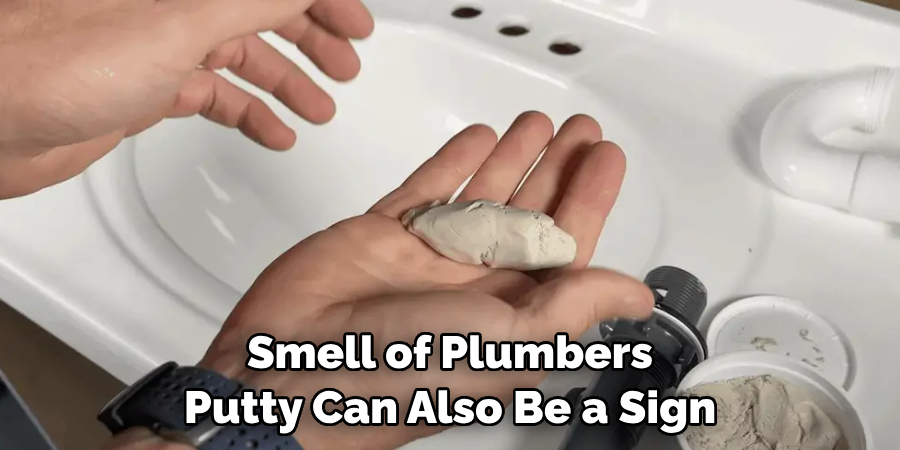
Being aware of these signs can help you determine if your plumbers putty is bad and take necessary action to prevent any potential damages or leaks in your plumbing projects. So, always keep an eye out for these signs and regularly inspect your plumbers putty for optimal effectiveness.
What Are the Potential Risks of Using Bad Plumbers Putty?
- Ineffective Waterproof Seal: One of the main purposes of plumbers putty is to create a watertight seal between plumbing fixtures and surfaces. If the putty has gone bad, it may not be able to effectively create this seal, leading to potential water leaks.
- Mold Growth: Bad plumbers putty can also lead to mold growth in and around the affected area. This can cause health hazards and damage to your plumbing fixtures.
- Water Damage: As mentioned, bad plumbers putty may not be able to effectively seal leaks, resulting in water damage to walls, floors, and other nearby structures.
- Expensive Repairs: If left unaddressed, water damage from bad plumbers putty can lead to costly repairs and replacements of damaged structures and plumbing fixtures.
- Health Risks: Mold growth from bad plumbers putty can also cause health risks, especially for those with respiratory issues or allergies.
- Difficulty in Maintenance: Using bad plumbers putty may require frequent maintenance and replacement, causing inconvenience and additional expenses in the long run.
- Wasted Time and Effort: Lastly, using bad plumbers putty can result in wasted time and effort in fixing leaks or replacing damaged structures. This can also disrupt daily activities if the plumbing issue is not addressed promptly.
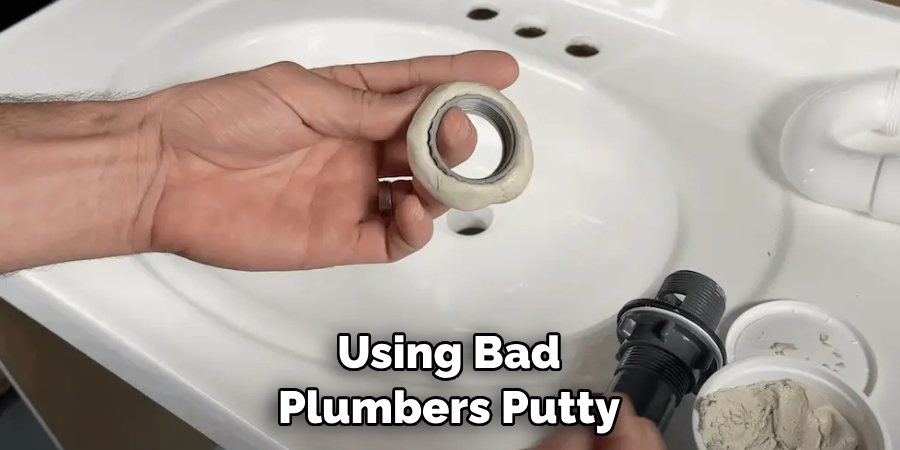
By being aware of these potential risks, it is important to regularly check your plumbers putty for any signs of expiration or deterioration to prevent these issues from occurring. So, always use fresh and high-quality plumbers putty for your plumbing projects to avoid these risks.
How Can You Prevent Water Leaks Caused by Bad Plumbers Putty?
- Regularly Check for Expiration Date: As mentioned before, plumbers putty also has a use-by date. Make sure to regularly check the expiration date and dispose of any expired putty.
- Store Properly: Store your plumbers putty in a cool, dry place away from direct sunlight to prevent it from drying out or deteriorating.
- Follow Manufacturer’s Instructions: Always follow the manufacturer’s instructions when using plumbers putty to ensure its effectiveness.
- Properly Dispose of Leftover Putty: After using plumbers putty, make sure to properly dispose of any leftover putty according to local regulations.
- Use One Type or Brand at a Time: Avoid mixing different types or brands of plumbers putty as they may have different chemical compositions, leading to potential issues.
- Replace Old or Expired Putty: Regularly inspect and replace old or expired plumbers putty to prevent potential damages or leaks.
- Seek Professional Help: If you suspect that your plumbers putty is bad, do not use it and seek advice from a professional plumber. They can help you determine if the putty is still usable or needs to be replaced.
By following these precautions and tips, you can prevent water leaks caused by bad plumbers putty and ensure the effectiveness of your plumbing projects. Remember that prevention is always better than dealing with potential damages and risks in the future.
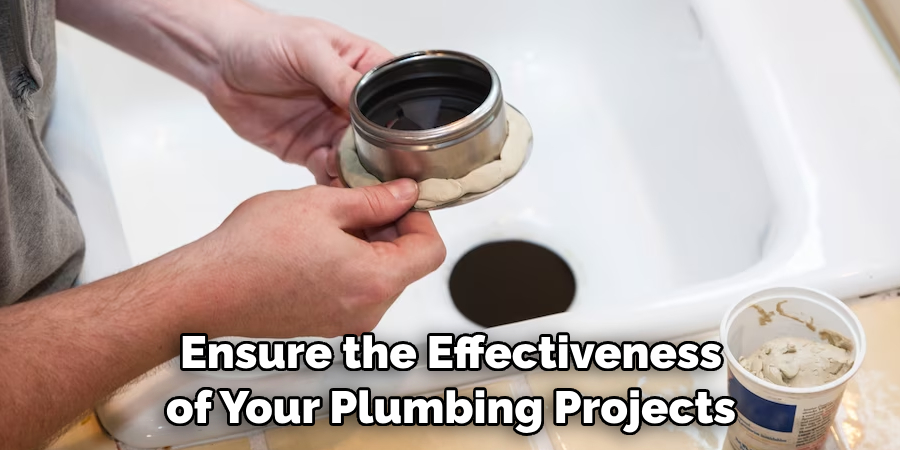
How Long Does It Take for Plumbers Putty to Harden?
The drying or hardening time of plumbers putty can vary depending on factors such as temperature, humidity, and the type/brand of putty used. Generally, it takes around 30 minutes to an hour for plumbers putty to fully harden. However, this may also depend on the thickness and amount of putty applied.
For example, if you are using a high-quality and fast-drying putty, it may harden faster compared to a standard putty. On the other hand, lower temperatures or high humidity levels can slow down the hardening process.
To ensure proper hardening, make sure to follow the manufacturer’s instructions and allow enough time for the putty to fully dry before using it in any plumbing projects. It is also important to note that even if the putty may feel dry on the surface, it may take longer for the putty underneath to fully harden.
Therefore, it is best to wait a few hours before applying any pressure or using the sealed fixture. Overall, make sure to consider these factors and allow enough time for the plumbers putty to properly harden for optimal effectiveness. So, be patient and give proper time for the putty to dry before using it in your plumbing projects.
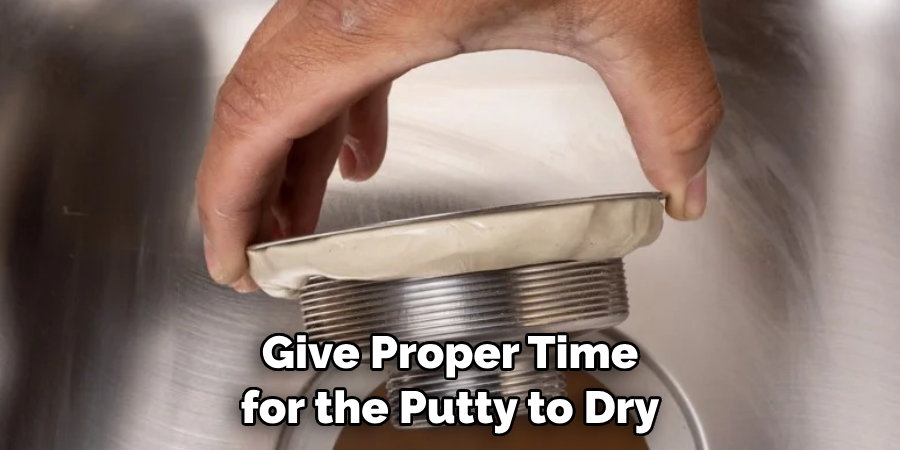
Conclusion
The main disadvantage of bad plumbers putty is that it can lead to potential risks and damages in your plumbing projects. As discussed, it can cause water leaks, mold growth, expensive repairs, health hazards, and wasted time and effort. Additionally, using bad plumbers putty may require frequent maintenance and replacement, causing inconvenience and additional expenses.
In conclusion, using bad plumbers putty can have serious consequences for your plumbing projects. It is important to regularly check for expiration dates, properly store and dispose of putty, and seek professional help if you suspect that your putty has gone bad.
By being aware of the potential risks and taking necessary precautions, you can prevent water leaks and other damages caused by bad plumbers putty. I hope this article has been beneficial for learning how to tell if plumbers putty is bad. Make Sure the precautionary measures are followed chronologically.

